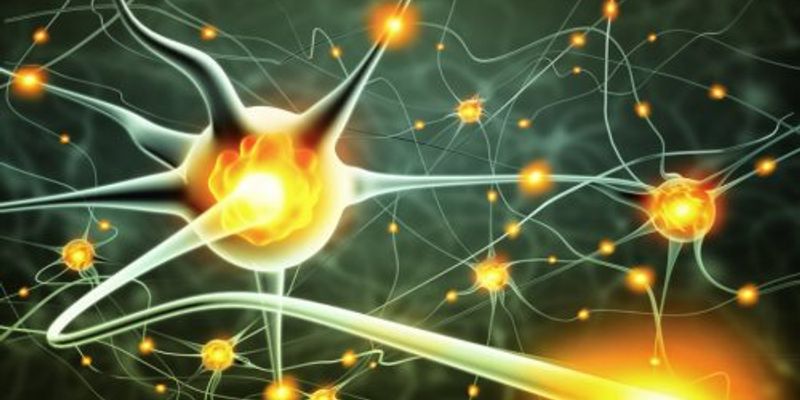Molecular Neuroscience
Molecular Neuroscience: is a division of neuroscience that examines concepts in molecular biology applied to the nervous systems of animals. As with molecular biology, molecular neuroscience is a relatively new field that is considerably dynamic.
-
FEB 04, 2015 | 7:30 AMC.E. CREDITSDuring my presentation, we will discuss:- Normal patterns of behavior (repertoire): social, food intake, territorial, agonistic, anti-predation, sleep and rest, play behavior, grooming, sex...Speaker: Marina Snitcofsky, DVM, MSc, PhDPresented at: Laboratory Animal Sciences Virtual Event Series 2015
JAN 26, 2015 | 8:00 AMAdvances in stem cell biology have raised great expectations that diseases of the central nervous system may be ameliorated by the development of non-haematopoietic stem cell medicines. Yet,...Speaker: Stefano Pluchino, MD, PhDPresented at: Beckman Coulter Life Sciences Virtual Trade Show
Sponsored By: Beckman Coulter Life Sciences, Beckman Coulter Life SciencesSEP 24, 2014 | 11:00 AMHeptares Therapeutics is a structure based drug discovery and development company which uses it StaR technology to enable X-ray structures, fragment screening and other biophysical techniques...Chronic pain has continued to grow as a public health concern, now affecting more than 116 million people in the United States. It is the leading cause of disability among American workers. L...Speaker: Benjamin Abraham, MD
Motor coordination relies on accurate predictions that specify how the body should move in particular sensorimotor contexts. Although such predictions are thought to be stored as associative...
MAR 20, 2014 | 2:00 PM
Parkinsons disease is the most common neurodegenerative movement disorder. Over the past few years, studies have identified a number of genes that cause or contribute to the pathogenesis of t...
The therapeutic utility of stem cells is rooted in an understanding -- and exploitation -- of their natural role from earliest development to lifes end. Their job is first to participate in o...
Speaker:
Evan W. Snyder, M.D., Ph.D., F.A.A.P
Presented at: Neuroscience Virtual Event Series 2014
MAR 20, 2014 | 1:00 PM
The cholinergic system is a potent neuromodulatory system which plays a critical role in cortical plasticity, attention and learning. The cholinergic activation of the cortex increases the si...
MAR 20, 2014 | 1:00 PM
Using high throughput next-generation sequencing to simultaneously search large number of genes for pathogenic mutations has numerous advantages. It decreases the pressure to narrow the dif...
MAR 20, 2014 | 1:00 PM
Neural stem cells exist in the adult mammalian brain throughout life. They reside in the subgranular layer of the dentate gyrus and in the subventricular zone. Neural stem cells have the capa...
MAR 20, 2014 | 12:00 PM
Spatially restricted protein synthesis is an important mechanism for the development and maintenance of many morphologically polarized cells including neurons. While most proteins are synthes...
MAR 20, 2014 | 12:00 PM
Alzheimers disease (AD) is a common neurodegenerative disorder characterized clinically by progress decline in memory and thinking and pathologically by the presence of senile plaques and neu...
MAR 20, 2014 | 12:00 PM
Assessment of sensorimotor and cognitive function plays a crucial role in all facets of patient care, from diagnosing the specific disease or injury, to management and monitoring of rehabilit...
MAR 20, 2014 | 11:00 AM
Alzheimers disease (AD) is a neurodegenerative disorder producing cognitive impairment and dementia in millions of elders. Currently no treatment is effective to slow the progression of AD. M...
MAR 20, 2014 | 10:00 AM
With a rising prevalence recently exceeding 1%, autism spectrum disorder (ASD) has become a pressing public health issue. Crucial hurdles on the way to targeted treatments are (i) the relianc...
MAR 20, 2014 | 10:00 AM
When speaking of neurodegenerative diseases, average public is not made aware of the true cost that brain related disorders have on annual budget. The true impact on economy is not usually...
MAR 20, 2014 | 10:00 AM
Neuroimaging plays a large role in our pursuit of the understanding of behavior and cognition in health and disease. The past decade has seen the emergence of a wealth of resources that suppo...
MAR 20, 2014 | 9:00 AM
The Brain Research through Advancing Innovative Neurotechnologies (BRAIN) Initiative is part of a new Presidential focus aimed at revolutionizing our understanding of the human brain. By acce...
Speaker:
Story Landis, PhD, Thomas R. Insel, MD, Justin Sanchez, PhD, John C. Wingfield
Presented at: Neuroscience Virtual Event Series 2014
MAR 20, 2014 | 8:00 AM
...
MAR 20, 2014 | 8:00 AM
Late onset dementia is usually a multi-factorial disease wherein cumulative pathological brain insults (of more than one pathology) results in progressive cognitive decline which ultimately l...
MAR 20, 2014 | 7:00 AM
The brain is a complex, densely wired circuit made out of heterogeneous cells, which vary in their shapes, molecular composition, and patterns of connectivity. In order to help discover how n...
MAR 20, 2014 | 7:00 AM
Huntington's disease (HD) is a progressive, inherited, degenerative brain disorder that produces physical, mental and emotional changes. Named for George Huntington, the physician who fi...
MAR 20, 2014 | 6:00 AM
Connectomics is a new field of research that aims to map the synapses of the nervous system in order to construct a wiring diagram of all the neural circuits. It is necessary to use the elect...
MAR 19, 2014 | 1:00 PM
ATP-binding cassette transporter A1 (ABCA1) mediates cholesterol efflux to lipid-free apolipoproteins such as apolipoprotein A-I (apoA-I) and apolipoprotein E (apoE). ABCA1 is essential regul...
FEB 04, 2015 | 7:30 AM
C.E. CREDITS
During my presentation, we will discuss:- Normal patterns of behavior (repertoire): social, food intake, territorial, agonistic, anti-predation, sleep and rest, play behavior, grooming, sex...
Speaker:
Marina Snitcofsky, DVM, MSc, PhD
Presented at: Laboratory Animal Sciences Virtual Event Series 2015
JAN 26, 2015 | 8:00 AM
Advances in stem cell biology have raised great expectations that diseases of the central nervous system may be ameliorated by the development of non-haematopoietic stem cell medicines. Yet,...
Speaker:
Stefano Pluchino, MD, PhD
Presented at: Beckman Coulter Life Sciences Virtual Trade Show
Sponsored By: Beckman Coulter Life Sciences, Beckman Coulter Life Sciences
Sponsored By: Beckman Coulter Life Sciences, Beckman Coulter Life Sciences
SEP 24, 2014 | 11:00 AM
Heptares Therapeutics is a structure based drug discovery and development company which uses it StaR technology to enable X-ray structures, fragment screening and other biophysical techniques...
Chronic pain has continued to grow as a public health concern, now affecting more than 116 million people in the United States. It is the leading cause of disability among American workers. L...
Speaker:
Benjamin Abraham, MD
Motor coordination relies on accurate predictions that specify how the body should move in particular sensorimotor contexts. Although such predictions are thought to be stored as associative...
MAR 20, 2014 | 2:00 PM
Parkinsons disease is the most common neurodegenerative movement disorder. Over the past few years, studies have identified a number of genes that cause or contribute to the pathogenesis of t...
The therapeutic utility of stem cells is rooted in an understanding -- and exploitation -- of their natural role from earliest development to lifes end. Their job is first to participate in o...
Speaker:
Evan W. Snyder, M.D., Ph.D., F.A.A.P
Presented at: Neuroscience Virtual Event Series 2014
MAR 20, 2014 | 1:00 PM
The cholinergic system is a potent neuromodulatory system which plays a critical role in cortical plasticity, attention and learning. The cholinergic activation of the cortex increases the si...
MAR 20, 2014 | 1:00 PM
Using high throughput next-generation sequencing to simultaneously search large number of genes for pathogenic mutations has numerous advantages. It decreases the pressure to narrow the dif...
MAR 20, 2014 | 1:00 PM
Neural stem cells exist in the adult mammalian brain throughout life. They reside in the subgranular layer of the dentate gyrus and in the subventricular zone. Neural stem cells have the capa...
MAR 20, 2014 | 12:00 PM
Spatially restricted protein synthesis is an important mechanism for the development and maintenance of many morphologically polarized cells including neurons. While most proteins are synthes...
MAR 20, 2014 | 12:00 PM
Alzheimers disease (AD) is a common neurodegenerative disorder characterized clinically by progress decline in memory and thinking and pathologically by the presence of senile plaques and neu...
MAR 20, 2014 | 12:00 PM
Assessment of sensorimotor and cognitive function plays a crucial role in all facets of patient care, from diagnosing the specific disease or injury, to management and monitoring of rehabilit...
MAR 20, 2014 | 11:00 AM
Alzheimers disease (AD) is a neurodegenerative disorder producing cognitive impairment and dementia in millions of elders. Currently no treatment is effective to slow the progression of AD. M...
MAR 20, 2014 | 10:00 AM
With a rising prevalence recently exceeding 1%, autism spectrum disorder (ASD) has become a pressing public health issue. Crucial hurdles on the way to targeted treatments are (i) the relianc...
MAR 20, 2014 | 10:00 AM
When speaking of neurodegenerative diseases, average public is not made aware of the true cost that brain related disorders have on annual budget. The true impact on economy is not usually...
MAR 20, 2014 | 10:00 AM
Neuroimaging plays a large role in our pursuit of the understanding of behavior and cognition in health and disease. The past decade has seen the emergence of a wealth of resources that suppo...
MAR 20, 2014 | 9:00 AM
The Brain Research through Advancing Innovative Neurotechnologies (BRAIN) Initiative is part of a new Presidential focus aimed at revolutionizing our understanding of the human brain. By acce...
Speaker:
Story Landis, PhD, Thomas R. Insel, MD, Justin Sanchez, PhD, John C. Wingfield
Presented at: Neuroscience Virtual Event Series 2014
MAR 20, 2014 | 8:00 AM
...
MAR 20, 2014 | 8:00 AM
Late onset dementia is usually a multi-factorial disease wherein cumulative pathological brain insults (of more than one pathology) results in progressive cognitive decline which ultimately l...
MAR 20, 2014 | 7:00 AM
The brain is a complex, densely wired circuit made out of heterogeneous cells, which vary in their shapes, molecular composition, and patterns of connectivity. In order to help discover how n...
MAR 20, 2014 | 7:00 AM
Huntington's disease (HD) is a progressive, inherited, degenerative brain disorder that produces physical, mental and emotional changes. Named for George Huntington, the physician who fi...
MAR 20, 2014 | 6:00 AM
Connectomics is a new field of research that aims to map the synapses of the nervous system in order to construct a wiring diagram of all the neural circuits. It is necessary to use the elect...
MAR 19, 2014 | 1:00 PM
ATP-binding cassette transporter A1 (ABCA1) mediates cholesterol efflux to lipid-free apolipoproteins such as apolipoprotein A-I (apoA-I) and apolipoprotein E (apoE). ABCA1 is essential regul...
























